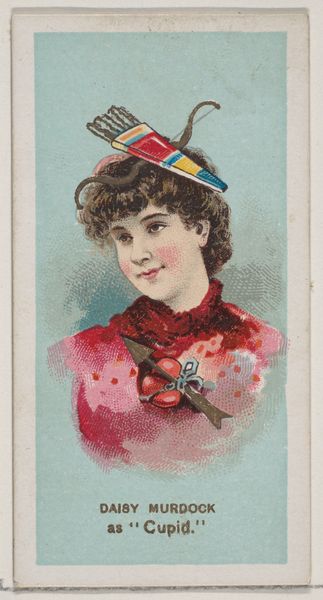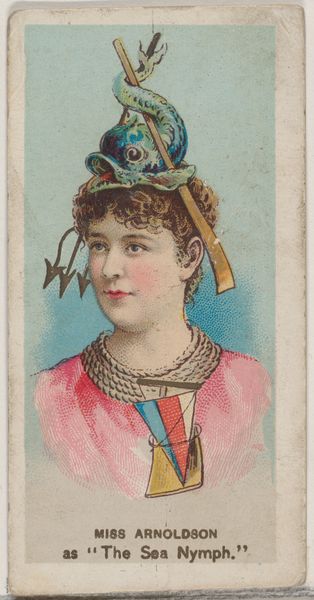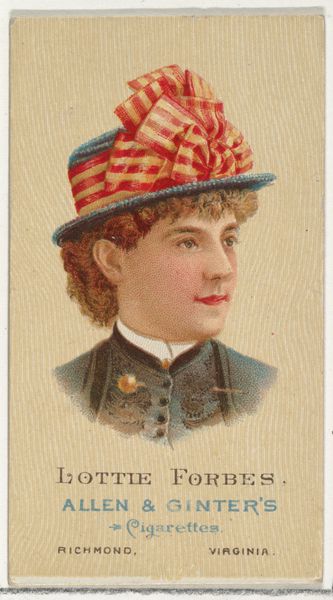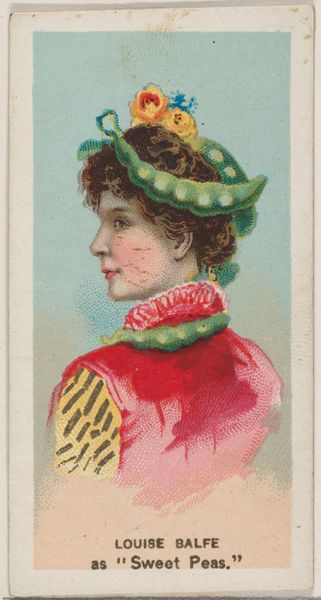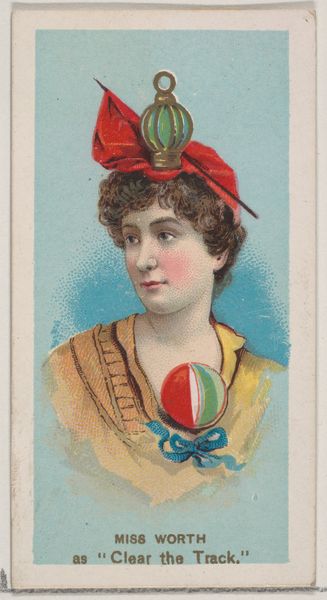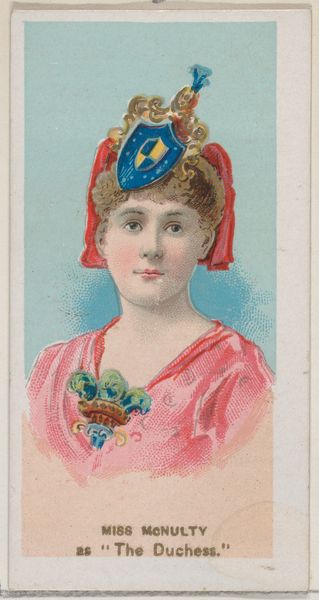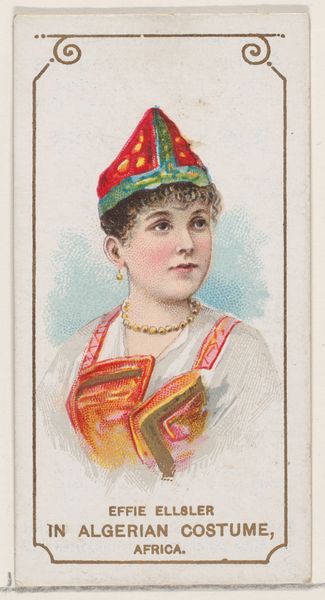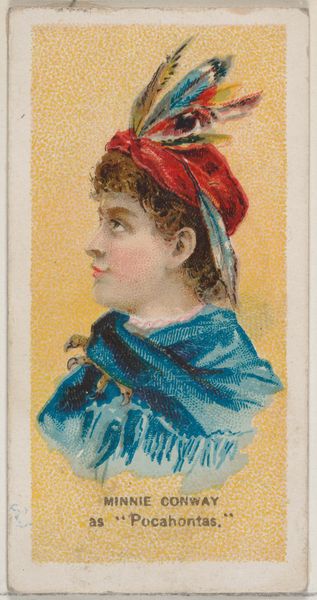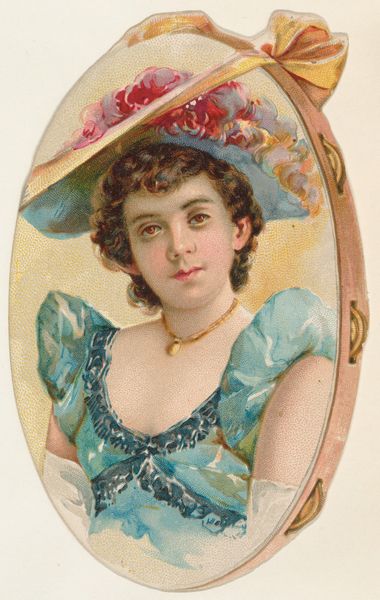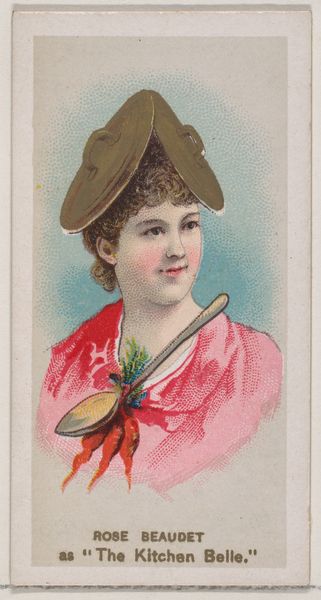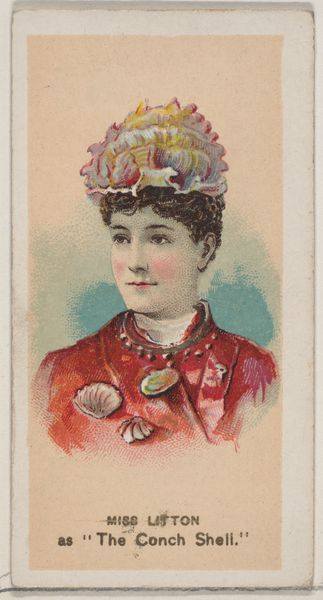
Genevieve Lytton as "The Kite," from the series Fancy Dress Ball Costumes (N73) for Duke brand cigarettes 1889
0:00
0:00
drawing, coloured-pencil, print
#
portrait
#
drawing
#
coloured-pencil
#
fancy-picture
# print
#
impressionism
#
oil painting
#
coloured pencil
#
portrait drawing
#
watercolour illustration
Dimensions: Sheet: 2 3/4 x 1 1/2 in. (7 x 3.8 cm)
Copyright: Public Domain
Curator: It's interesting to see the past uses of portraiture. What catches your eye first with this piece? Editor: The immediate visual impact is surprisingly delicate for something intended as a cigarette card. There's a real sweetness in the colors, and the soft lines lend an almost ethereal quality. Curator: This is a card from an 1889 series produced by W. Duke, Sons & Co. titled "Fancy Dress Ball Costumes" from their N73 series for Duke brand cigarettes. It depicts Genevieve Lytton dressed as "The Kite." It’s a chromolithograph, a colored print created using multiple lithographic stones. Editor: The kite motif is cleverly incorporated! It’s above her head as a part of a whimsical hat and its string cleverly mimics a costume prop wrapped in a light-green silk. But how did cigarette cards find their way into the world of portraiture? Curator: Cigarette cards were inserted into packs of cigarettes as a marketing strategy, often showcasing actresses, sports figures, or various collectibles. They served as promotional tools, aiming to boost brand loyalty and make the product more appealing, and were one way in which advertisers reinforced their influence on consumer culture and women’s fashions. The accessibility of these cards made art more democratic and exposed a broader audience to portraiture, while reinforcing notions of glamour and aspiration. Editor: The printing technique almost mimics an Impressionistic style, despite its industrial function, with those soft, almost pastel hues giving it an attractive sense of depth. Is that part of the cultural appeal? Curator: Certainly, the mass production of chromolithography, while technically advanced, did contribute to the popularization of certain aesthetics. These cards reflect prevailing tastes and cultural trends, while simultaneously shaping them through their widespread distribution. Editor: Ultimately, I suppose the appeal resides in the ephemeral beauty that this print evokes. The formal elements combined with this knowledge creates something truly unique. Curator: Precisely, these pieces reveal the cultural intersections between art, commerce, and identity during that era. They give us insights into how companies influenced consumers.
Comments
No comments
Be the first to comment and join the conversation on the ultimate creative platform.
